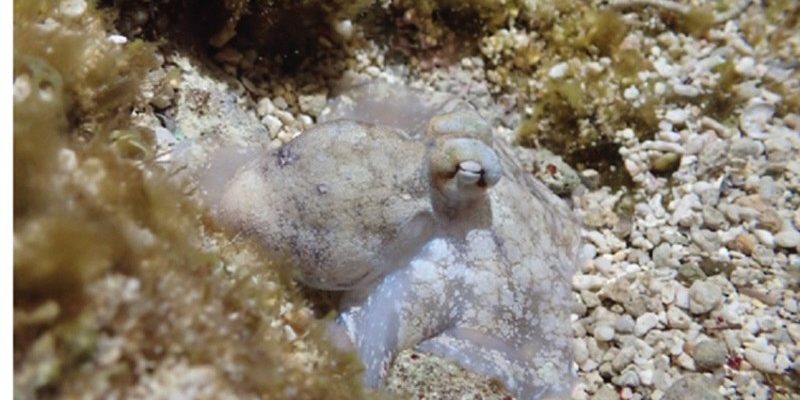The sleep of octopuses and humans shows amazing parallels: For example, both switch back and forth between two phases. The resemblance is all the more striking given that the last common ancestor of cephalopods and vertebrates lived around 550 million years ago. deduce from this Researchers from the Okinawa Institute of Science and Technology in the journal Naturethat this sleep pattern arose independently in the animal groups. Apparently, it fulfills an important function for creatures with high intelligence.
“All animals seem to have some form of sleep, even simple organisms like jellyfish and fruit flies,” study leader Sam Reiter is quoted as saying in a statement from the university. “But for a long time it was only known in vertebrates that they oscillate between two different sleep phases.”
Two years ago, Brazilian researchers reported that this also applies to octopuses. According to this, in the squid of the species Octopus insularis, a longer, quiet phase of sleep is regularly interrupted by a very short, active phase in which the animals suddenly change their skin color, move their eyes, or contract their suction cups. This active sleep phase is similar to what is known as REM sleep in humans, during which most dreams occur, and the other phase to non-REM sleep. The term REM – Rapid Eye Movement – comes from the fact that in this phase the eyes move quickly under the closed lids.
Do the skin patterns show what the animals dream?
The researchers from Okinawa have now confirmed in the laboratory that the animals of the species Octopus laqueus reacted significantly less to physical stimuli in both sleep phases than when they were awake – they were actually sleeping. Then the team analyzed their brain activity.
Accordingly, in the quiet phase, this shows wave patterns that resemble so-called sleep spindles. This particular waveform is a characteristic core element of non-REM sleep in humans. Its exact function is not clear, but it is probably related to memory. It is fitting that such wave patterns appeared in the octopuses in those areas of the brain that are related to learning and memory.
About every hour, the animals switched from the quiet to the active sleep phase for roughly one minute. The resulting color patterns on the skin were similar to those that the octopuses also show when they are awake, for example to camouflage themselves, to warn enemies or to communicate with one another. The group speculates that the animals could possibly have experiences from the waking state during this sleep phase and thereby call up the associated skin reactions.
Although this is not certain, it could indicate dreams. “While humans can verbally report their dreams after waking up, the skin pattern in octopuses provides a visual indication of their brain activity during sleep,” speculates Reiter. The scientists do not know whether this is actually the case.
Nevertheless, they draw conclusions about the function of sleep. “Two-phase sleep evolved independently in two distantly related creatures. Octopuses have large brain structures, but they are completely different from those of vertebrates,” says co-author Leenoy Meshulam. “This suggests that active sleep, resembling wakefulness, is a common feature of complex cognition.”
Octopuses are a genus within the octopus family and are considered to be very intelligent. They can unscrew screw caps from jars or judge whether their bodies will fit through an opening or not. In addition, they are able to adapt their body color and pattern to their surroundings at lightning speed.

